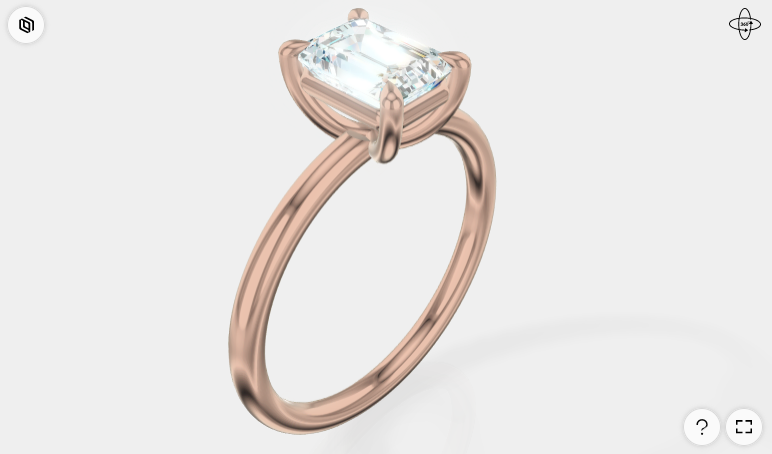Something that baffles diamond and jewellery consumers on a regular basis, and something I regularly get asked about is the apparent random pricing of diamonds and jewellery across various stores. For example, one shop may be selling a diamond ring for $5,000, whilst another down the road will be selling something very similar for $10,000.
These sorts of price discrepancies fly in the face of the level of commoditisation that has occurred within the industry in the past ten or so years. On the diamond side, the widespread adoption of independent certification (GIA, IGI et al.) allows easy comparisons between diamonds. Meanwhile, the widespread adoption of CAD/CAM makes the need for “talented jewellers”, who make jewellery and set stones by hand, pretty much null and void, with even novice jewellers able to make complex jewellery from components produced with CAD/CAM. Therefore, whilst some may assume that some jewellers are simply greedy, gouging customers and making a lot of profit, a more reasonable explanation is that inefficiencies exist, both within the retail store and the supply chain.
Retail Realists vs Charlatans
In the retail jewellery industry, the two largest drivers of inefficiency are firstly, the cost of running a store – that is labour, rent and all the other expenses involved with keeping a store open and secondly, the cost of keeping stock which causes hundreds of thousands or even millions of dollars to be tied up potentially for years or even decades.
In their excellent State of the Industry Report, Jeweller Magazine, documents the rise of jewellery retailers “without a storefront”. Whilst still a very small percentage of the industry – about five percent – these jewellers tend to operate from home, online and/or an “upstairs” premises and keep little to no stock. Therefore, without the two main inefficiencies of traditional retailers, one may conclude that these retailers are the most “efficient, and thus able to offer the most competitive prices to the end consumer.
However, the report from Jeweller Magazine paints retailers in a very black and white fashion – that is those with and without a storefront. The reality is that there are many shades of grey when it comes to jewellery retailing, and many in the industry are looking to adopt more efficient and thus more profitable ways of doing business. For example, despite the chagrin of many retailers, a lot of diamond wholesalers are now selling directly to the public, either by opening their doors to the public or establishing an entirely different brand. Likewise, many retailers, responding to the demands of their customers are offering more bespoke and online options, which require holding a lot less stock and a lot less overhead. Just recently, Michael Hill, Australia’s largest jewellery retailer launched a new purely online and bespoke brand called TenSevenSeven, mimicking what most online engagement ring retailers already do.

Above: Michael Hill’s New Bespoke Engagement Ring Design Website
That said, within the industry, there continues to exist a small amount of what I describe, perhaps unfairly, as industry charlatans. These are people who spend large amounts of money trying to appear bigger than they are, or attempt to create the illusion that their brand is more valuable than it really is. For example, in Perth, where Jogia Diamonds are located, one jeweller now employs nearly 50 bench jewellers, despite only having two stores! Similarly, another jeweller opened a new store next door to Tiffany in 2008, closed it a few years later only to reopen a bigger store a few doors down a few years after closing the old store! These attempts to create a certain brand image, whilst usually the realm of larger international brands such as Tiffany or Cartier, are completely unjustified when it comes to small local shops with one or two locations, and most certainly add a not so insignificant cost to the retailer’s goods and services.
Solving The Supply Side Issue
Traditionally, there are two ways that a retailer may source their diamond stock. Firstly, the retailer may buy directly from either a diamond manufacturer or diamond wholesaler and either pay with cash upfront or on terms, say 30 days. The diamond is then kept in the retailer’s stock, and the longer it sits in the retailer’s safe or showcase, the higher the holding cost. The other way is to take goods on consignment, or “memo” from a wholesaler for display in their store. This method, whilst avoids the holding costs, ultimately means that the purchase price of the goods will be a lot higher than if the goods were purchased outright from the wholesaler or through a manufacturer. For retailers, this can lead to a difficult balancing act, as retailers don’t want to hold too much stock leading to higher holding costs, or worse yet, keeping the wrong stock, leading to “dead stock” that cannot be sold. On the flipside, buying everything on consignment, whilst less risky, usually leads smaller margins due to the higher purchase price of goods sold on consignment.
In the past few years, a number of companies have seemingly popped up out of the blue aiming to streamline the process between manufacturers and retailers. The most talked about of these companies is Nivoda who provide both logistics between the diamond manufacturer and retailer, as well as credit terms and return facilities to retailers, thus eliminating the need for local wholesalers. Speaking to a few Australian diamond wholesalers, a lot of them are very concerned about companies such as Nivoda eating into their business – and they have every right to be worried – as what is essentially a logistics business is now changing the way manufacturers and retailers, both large and small, do business with each other.

Above: Is the humble diamond wholesaler about to become obsolete?
So whilst some in the industry hang on to rusted practices of yester-year, many are adopting new ways of doing business that deliver a better quality product at a lower price to consumers which surely goes a long way to explaining why one shop may sell a diamond ring for $5,000, whilst another down the road will be selling something very similar for $10,000.